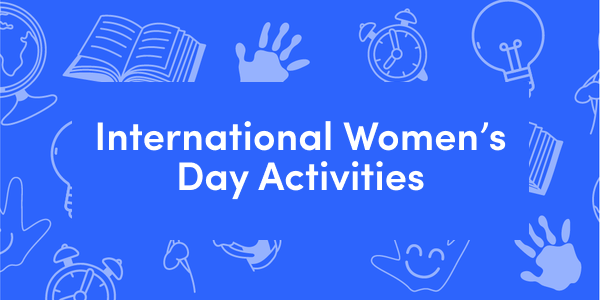6 Tips for Celebrating International Women’s Day 2023 in Primary Schools

1. Teach the History of International Women’s Day
Teaching the history of International Women’s Day is critical; without the background of where we’ve been and how far we’ve come, pupils are less likely to understand the importance of gender equality. Women's rights fact files and info sheets are great for giving pupils a background to gender equality, without overwhelming younger years with a complete history of events.
As we touched on in our article about making the KS1 & KS2 history curriculum more engaging, one of the best ways to make history captivating is to talk about individuals who were instrumental in revolutionising women’s rights. In our Year 2 History Lesson pack, we cover two women who have made significant contributions to the rights of women, Malala Yousafazi and Emmeline Pankhurst.
This lesson plan can prove particularly useful when covering the history of the day because we cover one of the suffragettes (meaning you can cover how the suffragettes won British women the vote) and a woman who advocated for female education rights and was awarded the Nobel Peace Prize for her work as recently as 2014. These two eras help children connect with history while rooting the importance of this work in the here and now.
2. Highlight Women Currently Doing Incredible Things
You can introduce your pupils to women living now and doing incredible things and celebrate their achievements. While Beyonce could certainly have a place on the list (and is a good excuse to play some music in the classroom), try to find women your pupils may not have heard of.
Here are some women to consider:
- Carolyn Foote & Becky Calzada - formed FReadom Fighters to protect books from being banned in Texas on topics pertaining to race and LGBTQ+ themes
- Shannon Melissa Chan - the surgeon-by-day works closely with Doctors Without Borders to provide surgical care globally and puts herself on the front line in places ravaged by war to help the people there.
- Maria Ressa - the Journalist fights tirelessly against fake news around the world and in the Philippines. In 2021 she was co-awarded the Nobel Peace Prize for her work and currently faces a potential 100-year jail term in the Philippines for exposing the truth about global political online corruption.
- Ridhima Pandey - At only 9 years old, she filed a suit against the Indian government for not doing enough to combat climate change. Now, at 15, she has been selected for the UN Women’s 30 for 2030 initiative to provide expertise on youth and gender issues.
- Autumn Peltier - Autumn was 13 in 2018 when she addressed the UN General Assembly on the issue of water protection. She is the Chief Water Commissioner for the Anishinabek Nation in Canada.
There is a multitude of brilliant women to choose from and you might be able to find an example that relates to your school's locality.
3. Celebrate Women in Pupils’ Lives
Celebrating the women in our lives is an important aspect of International Women’s Day. There are a number of activities you can do in the classroom to help pupils honour and appreciate the women who have made a positive impact on their lives. Here are a few ideas:
- Write letters to the women who have inspired or influenced them in some way (this could be to family members, teachers, authors etc.)
- Make Mother’s Day cards and/or gifts to celebrate the maternal figures in pupils' lives
- Create a “Women Who Inspire Us” Board where pupils display pictures and biographies of famous women they admire
- Draw images of the women they love or who inspire them
- Write about a woman they’d like to be like when they grow up
4. Challenge Gender Stereotypes
Gender stereotypes can be a more difficult topic to broach, but you can have constructive conversations by looking at areas where gender stereotypes still exist. For example, you can get children to compare “jobs for men vs jobs for women” and “sports for men vs sports for women.” Through this activity, you can ask pupils to look at areas where they’re already developing a bias and look at it critically.
5. Have an International Women’s Day Assembly
Having an International Women’s Day assembly at primary school is a great way to start the day and lay the groundwork for the lessons and activities they’ll take part in throughout the day. While having a guest speaker from the local community can be a great way to root gender issues in current times, or talk about issues conquered in the past, taking a collective look at notable women is a powerful way to get children into a mindset of appreciation. We have a slideshow of great men and women in science that can be easily adapted for this purpose.
6. Talk About The Queen
The Queen’s passing last year will be a recent memory in pupils’ minds, so talking about the life and work of The Queen is an ideal topic for International Women’s Day. While The Queen never publicly embraced feminism, she did have some strong feminist moments and had a central role to play in how the British public (and people around the world) perceived women. For years 5 and 6, our presentation on The Queen as a Political Figure is a great resource.
Celebrating International Women’s Day is an excellent way to educate pupils about the importance of gender equality and, most importantly, celebrate all of the incredible women that help to make their lives what they are. From their mothers, grandmothers, and teachers to celebrities, scientists, and activists, learning why they should have so much appreciation for women will help them be agents for change. By implementing the tips and activities we’ve discussed, we can create a supportive and inclusive environment that values and celebrates women.
To access all the International Women's Day resources on Pango, sign up free today!



